The Three Passes Trek is one of the most challenging treks in Nepal. So the cause of the Challenging path The Three Passes Trek Permit is a must required. It is a high-altitude trek that takes you through three mountain passes above 5,000 meters offering breathtaking views of the Himalayan range. This trek is not for the faint-hearted, as it requires a good level of fitness, endurance, and acclimatization to the high altitude. In this blog, we will take you through the highlights of the Three Passes Trek and what makes it so thrilling.
Three Passes Trek Permit
Three Passes Trek Permit- Firstly, all trekkers need to obtain a Sagarmatha National Park permit in order to enter the Everest region. The Sagarmatha National Park is a protected area that covers the region surrounding Mount Everest, and the Three Passes Trek Permit fee goes towards conservation efforts and the maintenance of the park. Trekkers can obtain the permit from the Nepal Tourism Board or from the Sagarmatha National Park entrance gate in Monjo. It cost NPR 3000 per person.

Secondly, trekkers also need to acquire a Trekkers’ Information Management System (TIMS) card, a system designed to offer information and support to trekkers in the region. The TIMS card tracks trekkers’ movements and assists in case of an emergency. Trekkers can obtain the TIMS card from the Nepal Tourism Board or a TIMS counter in Kathmandu or Pokhara.
Finally, if trekking independently, trekkers also need to obtain a permit for each of the three passes: Renjo La, Cho La, and Kongma La. These permits can be obtained from the Nepal Tourism Board or from the respective entrance gates to each pass. After the hecticness of the Three Passes Trek Permit, you can enjoy your treks ahead.
Three Passes Trek Location
The Three Passes Trek is a challenging and rewarding trek in the Everest region of Nepal. This trek is for those who are looking for an adventure and a challenge, as it involves crossing three high mountain passes: Kongma La Pass, Cho La Pass, and Renjo La Pass. The trek takes about 19 to 21 days to complete and covers a distance of approximately 112 miles.
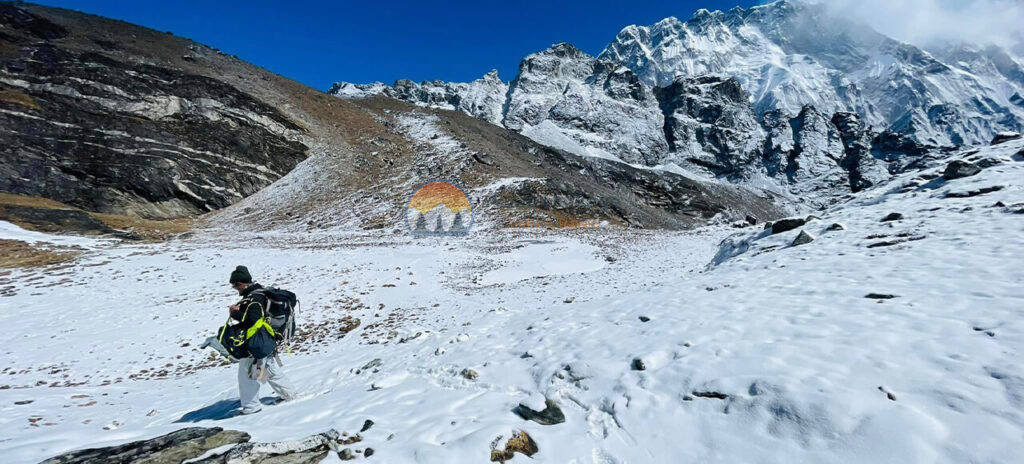
The starting and ending point of the trek is usually Lukla, which is accessible by a 30-minute flight from Kathmandu. From Lukla, the trek passes through several villages, including Namche Bazaar, Dingboche, and Gokyo. These villages provide trekkers with an opportunity to experience the culture and lifestyle of the Sherpa people, who are the indigenous people of the region.
Highlight of Three Passes Trek
The Three Passes Trek is a challenging and adventurous trekking route in the Everest region of Nepal which is considered one of the best treks in the world. The trek passes through three high mountain passes: Renjo La (5,360m), Cho La (5,420m), and Kongma La (5,535m) each of which provides breathtaking views of the surrounding peaks and glaciers.
Also Read: Three Passes Trek Without a Guide
Here are some of the highlights of the Three Passes Trek:
Spectacular Views:
The Three Passes Trek is a remarkable journey that takes you through the stunning terrain of the Everest region offering unparalleled views of the majestic Himalayan range. As you embark on this trek, you will be mesmerized by the breathtaking vistas of snow-capped peaks including the iconic Mount Everest, the world’s highest mountain, as well as other towering summits like Lhotse, Nuptse, Makalu, and Cho Oyu. The grandeur and beauty of these peaks set against the backdrop of the Himalayas is an awe-inspiring sight to behold.

In addition to the stunning mountain views, the Three Passes Trek also takes you on a journey through the Khumbu Glacier which is Nepal’s largest glacier. This massive ice sheet, located in the Everest region, is a sight to behold and offers a unique glimpse into the power of nature. As you traverse the glacier, you will be surrounded by towering ice walls and impressive crevasses making for an unforgettable experience.
The journey, however, does not end there. You will also get the opportunity to explore other high-altitude lakes, including the famous Gokyo Lake. This lovely body of water is set among high mountains and provides amazing views of the surrounding countryside. The lake’s crystal clear waters are a vivid shade of blue and the quiet surroundings give a peaceful getaway from the rush and bustle of everyday life.
Unique Culture and Tradition
The Three Passes Trek not only offers breathtaking natural scenery but also takes you through the heart of Sherpa culture and tradition. As you trek through the Everest region you will have the opportunity to visit several Sherpa villages including Namche Bazaar, Thame, and Khumjung where you can immerse yourself in the unique customs and practices of this fascinating community.
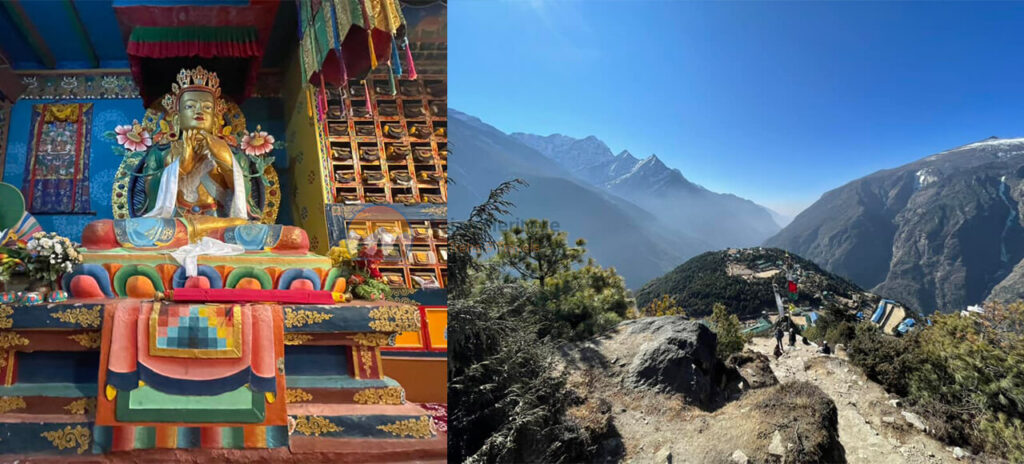
One of the highlights of the trek is the chance to visit ancient monasteries such as the Tengboche Monastery. This monastery is the largest in the Everest region and serves as a significant religious and cultural center for the Sherpa people. Home to more than 60 monks, the monastery is adorned with intricate murals and sculptures that reflect the unique Sherpa Buddhist tradition. As you explore the monastery you will witness traditional prayer ceremonies and chants providing a glimpse into the spiritual beliefs of the Sherpa community.

In addition to visiting monasteries, you will also have the chance to learn about the Sherpa way of life and their hospitality. The Sherpa people are renowned for their friendly and welcoming nature and you will have the opportunity to experience this firsthand as you interact with the locals. From trying traditional Sherpa cuisine to learning about their farming practices and daily routines, you will gain a deep appreciation for this rich and fascinating culture.
Challenging Passes:
The Three Passes Trek is not for the faint of heart. This challenging trek requires a good level of physical fitness and stamina as you traverse through the rugged terrain of the Everest region. One of the main challenges of the trek is crossing the three high mountain passes – Renjo La, Cho La, and Kongma La – each of which presents a unique set of obstacles.
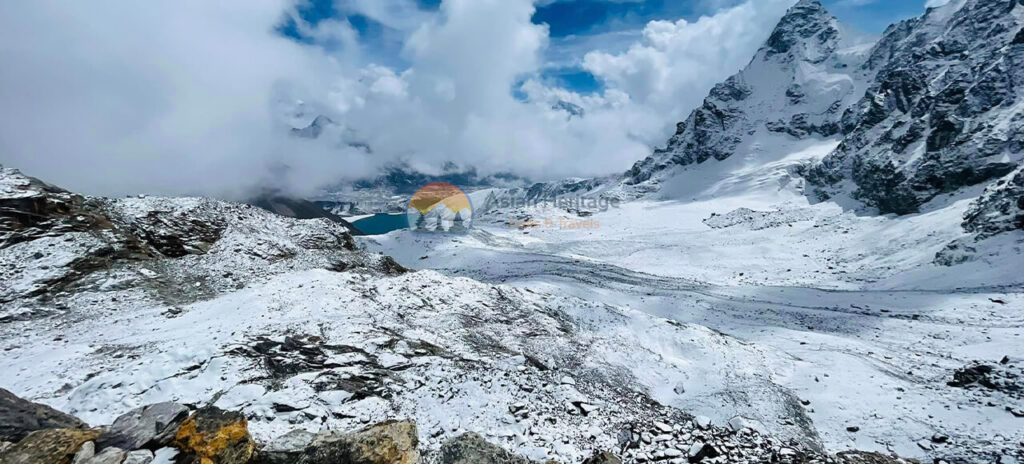
The first pass you will cross is Renjo La which is located at an altitude of 5,360 meters. This pass is steep and narrow and you will need to use ropes and crampons in some sections to navigate through the rocky terrain. The climb to the top can be physically demanding but the panoramic views of the surrounding mountains and valleys are a rewarding sight to behold.
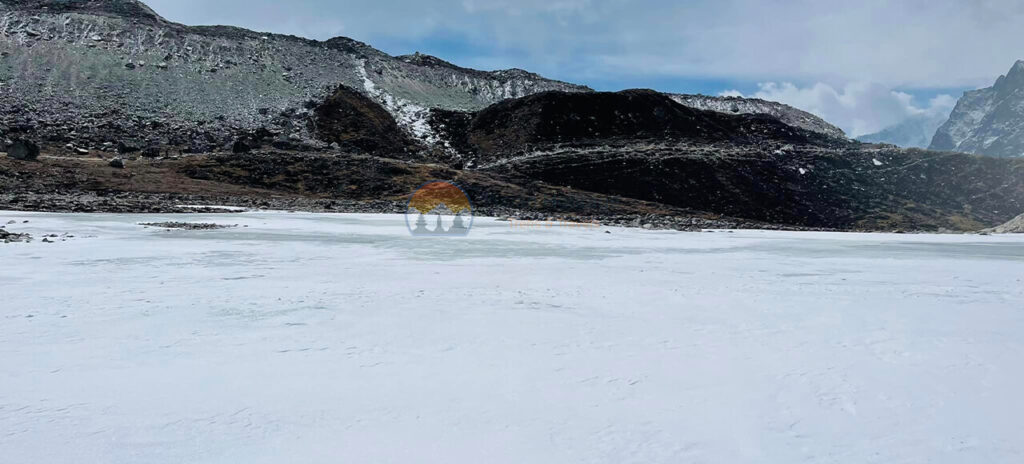
The second pass, Cho La, is even higher, located at an altitude of 5,420 meters. This pass is known for its steep and icy sections which require a good level of technical skills to navigate. You will need to use crampons and ice axes to climb up the glacier which can be physically and mentally challenging. However, the sense of achievement you get after reaching the top is unmatched and the views of the surrounding peaks are breathtaking.

The third pass, Kongma La, is the highest of the three, located at an altitude of 5,535 meters. This pass is also known for its steep and rocky terrain and you will need to use ropes and crampons to navigate through some of the sections. The climb to the top can be physically grueling but the feeling of accomplishment you get after crossing the pass is indescribable.
Best Time to go
The Three Passes Trek is generally best undertaken during the spring and autumn seasons which run from March to May and September to November, respectively. During these months, the weather is generally stable with clear skies and dry conditions which makes for great trekking conditions. The temperatures are also mild during these months making it easier to hike long distances without feeling too hot or too cold.

In the spring season, you can expect to see rhododendrons and other wildflowers in full bloom which adds a splash of color to the already stunning landscape. The skies are generally clear which means you can expect to see panoramic views of the mountains on a daily basis. However, this is also a popular time for trekking so the trails can be crowded and accommodation may be harder to find.
In the autumn season, the skies are still clear but the temperatures are cooler than in the spring. This makes it a great time to trek if you prefer cooler weather and the crowds are generally thinner than in the spring. Additionally, autumn is harvest season in Nepal so you can expect to see terraced fields of rice and other crops along the way.
Summer and Winter
Trekking the Three Passes during the summer months (June to August) is not recommended due to the monsoon season. The trails can be muddy and slippery making it difficult to trek safely. The risk of landslides and other weather-related hazards is also higher during this time.
You may also like: Everest Base Camp Difficulty: Is Everest Base Camp Dangerous?
The winter months (December to February) are also not recommended for trekking the Three Passes Trek due to the extreme cold and the risk of snowfall. The passes can be difficult to cross during this time and the trails can be treacherous due to ice and snow.
Fitness Level
The Three Passes journey is a lengthy and demanding journey over high-altitude terrain. To accomplish this walk, you need to be in good shape. You will be walking for 18-22 days and will reach a height of 5,550 meters. As a result, it is critical to prepare your body to handle the physical demands of the walk.
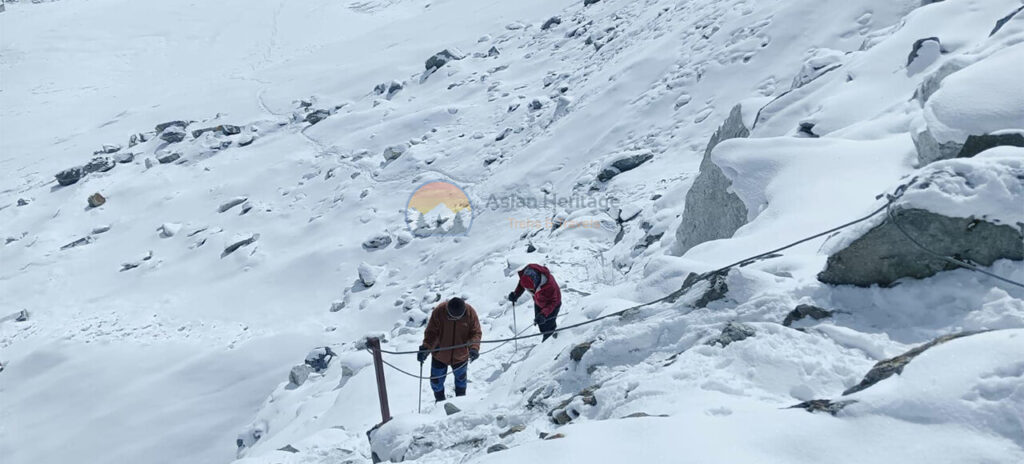
The first step in getting ready for the Three Passes Trek is to improve your cardiovascular endurance. This may be accomplished by engaging in regular aerobic workouts such as jogging, cycling, or swimming. These activities will help you increase your endurance and lung capacity. Aim for at least 30 minutes of cardiac activity three to four times each week.
Strength training is also crucial for preparing for the Three Passes Trek. You will be carrying a backpack for long periods, so it is essential to strengthen your upper body, core, and legs. Exercises such as squats, lunges, push up and planks are great for building up your strength.
Acclimatization
Another essential aspect of preparing for the Three Passes Trek is acclimatization. As you trek to higher altitudes, the air becomes thinner and it becomes harder to breathe. This can lead to altitude sickness, which can be dangerous. Therefore, it is essential to acclimatize gradually by spending a few days at a lower altitude before going higher. You should also drink plenty of water to stay hydrated and avoid alcohol and caffeine.
Finally, mental preparation is just as important as physical preparation. Trekking the Three Passes Trek requires mental toughness as you will face many challenges along the way. You will need to prepare to push yourself outside of your comfort zone and maintain a positive mindset throughout the trek.
Itineraries
We will provide sample itineraries for the Three Passes Trek which typically takes between 17-21 days to complete. You can modify these itineraries to suit your individual needs and preferences, but they provide a good framework for planning your trek.
- Day 1: Arrival in Kathmandu
- Day 2: Fly to Lukla and trek to Phakding (2,610m)
- Day 3: Trek to Namche Bazaar (3,440m)
- Day 4: Rest day in Namche Bazaar
- Day 5: Trek to Tengboche (3,860m)
- Day 6: Trek to Dingboche (4,410m)
- Day 7: Rest day in Dingboche
- Day 8: Trek to Lobuche (6119m)
- Day 9: Trek to Gorak Shep (5,164m) and hike to Everest Base Camp (5,364m)
- Day 10: Hike to Kala Patthar (5,644m) and trek to Dzongla (4,800m)
- Day 11: Trek to Cho La Pass (5,420m) and to Thangnak (4,700m)
- Day 12: Trek to Gokyo (4,790m)
- Day 13: Rest day in Gokyo
- Day 14: Hike to Gokyo Ri (5,357m) and back to Gokyo
- Day 15: Trek to Renjo La Pass (5,360m) and to Marulung
- Day 16: Trek to Namche Bazaar
- Day 17: Trek to Lukla
- Day 18: Fly to Kathmandu
- Day 19: Departure from Kathmandu
Difficulty
Undertaking the Three Passes Trek is an adventure of a lifetime but it is also a physically and mentally challenging experience. The trek requires a high level of fitness and endurance as well as an ability to adapt to high-altitude conditions. Experts do not recommend it for novice trekkers or those with limited experience at high altitudes.
You may also like: Three Passes Trek Itinerary
The Three Passes Trek covers a distance of approximately 160km and takes around 20-25 days to complete depending on the pace of the trekker. The trek begins and ends in the town of Lukla and passes through some of the most beautiful and remote areas of the Khumbu region including the Everest Base Camp and the Gokyo Lakes.
Difficulty on Passes:
The first pass on the route, Kongma La Pass, poses the most challenging of the three. The pass comes with a hard and rocky ascent to a height of 5,535 meters which might take up to 7 hours to accomplish. The climb to Kongma La Pass is across a lonely and desolate area, so hikers should bring enough water and thick gear to deal with the harsh weather and strong winds.
The second pass on the trek is Cho La Pass which is also a challenging climb due to its steep ascent and rocky terrain. Crossing a glacier on the route to Cho La Pass can be hazardous if one does not take proper precautions. We advise trekkers to use crampons and ropes for safety and to hire a guide or porter to assist with carrying equipment.
Also Check: Places to Visit in Nepal for Couples
The final pass on the trek is Renjo La Pass which offers stunning panoramic views of the Gokyo Lakes and surrounding mountains. The ascent to Renjo La Pass is steep but less rocky than the previous two passes. We advise trekkers to take their time and acclimatize properly to avoid altitude sickness.
Equipment
Trekking through the mountains can be an exhilarating experience, but it’s important to prepare well with the right equipment. A three passes trek such as the popular trek through the Everest region of Nepal requires a certain set of equipment to ensure safety and comfort along the way.
Here are some of the essential equipment requirements for a three-pass trek:
Trekking boots:
A good pair of trekking boots is essential for any trekking adventure, especially so for a three-pass trek. The boots should be sturdy, waterproof, and have good ankle support to handle the rocky, uneven terrain.
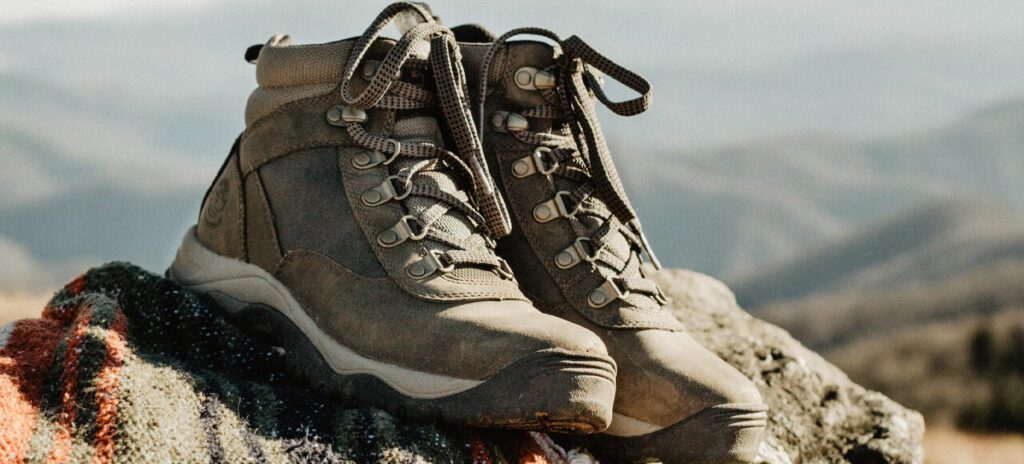
Warm clothing:
The weather in the mountains can be unpredictable and temperatures can drop quickly so it’s important to bring warm clothing. This includes a down jacket, fleece, thermal layers, hat, and gloves.
Backpack:
A durable and comfortable backpack is necessary to carry all the gear you’ll need for the trek. Look for a backpack with padded straps and back support and make sure it’s large enough to hold all your essentials.
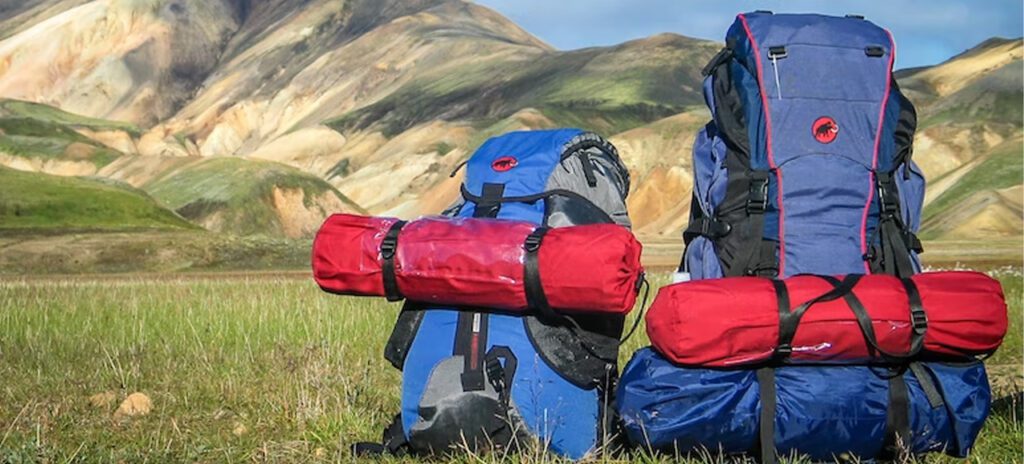
Sleeping bag:
During the trek, you’ll stay in tea houses or lodges which provide basic bedding. However, we recommend bringing your sleeping bag to ensure a good night’s sleep and to stay warm in the colder temperatures.
Trekking poles:
Trekking poles can be very helpful on steep and rocky trails providing extra stability and support. Look for poles that are adjustable and collapsible for easy storage.
Water bottle:
Staying hydrated is crucial during the trek so bring a reusable water bottle and a water purification system to ensure access to safe drinking water.
Headlamp:
A headlamp is important for early-morning starts and late-night arrivals at tea houses. Make sure to bring extra batteries.
First aid kit:
A basic first aid kit is essential for any trek. Include items such as bandages, antiseptic, pain relief medication, and blister treatment.
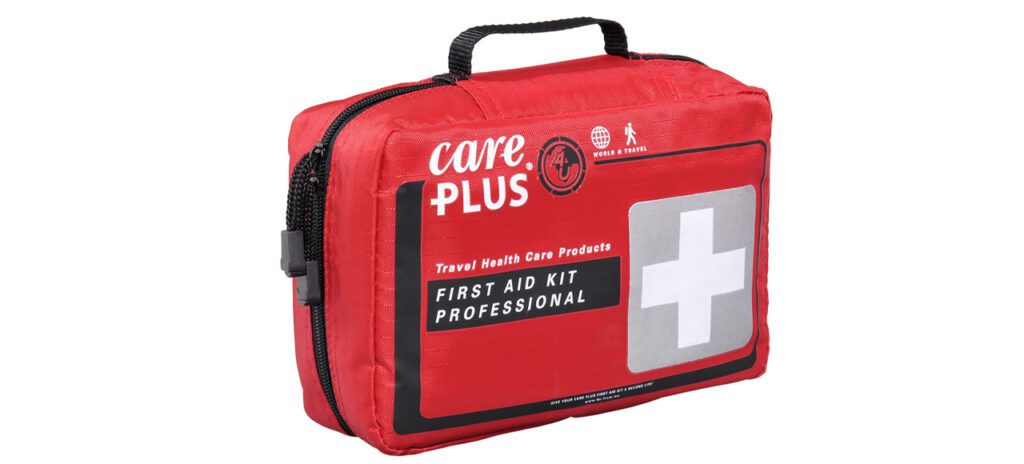
Sun protection:
The sun can be intense in the mountains so bring sunglasses, a hat, and sunscreen to protect your skin and eyes.
Navigation tools:
Ensure that you bring a detailed map, compass, and GPS device to navigate the trails and avoid getting lost.
Let our expert team at Asian Heritage Treks and Travel take care of everything — from guided tours to personalized packing tips and travel arrangements.
Plan an exciting trip







